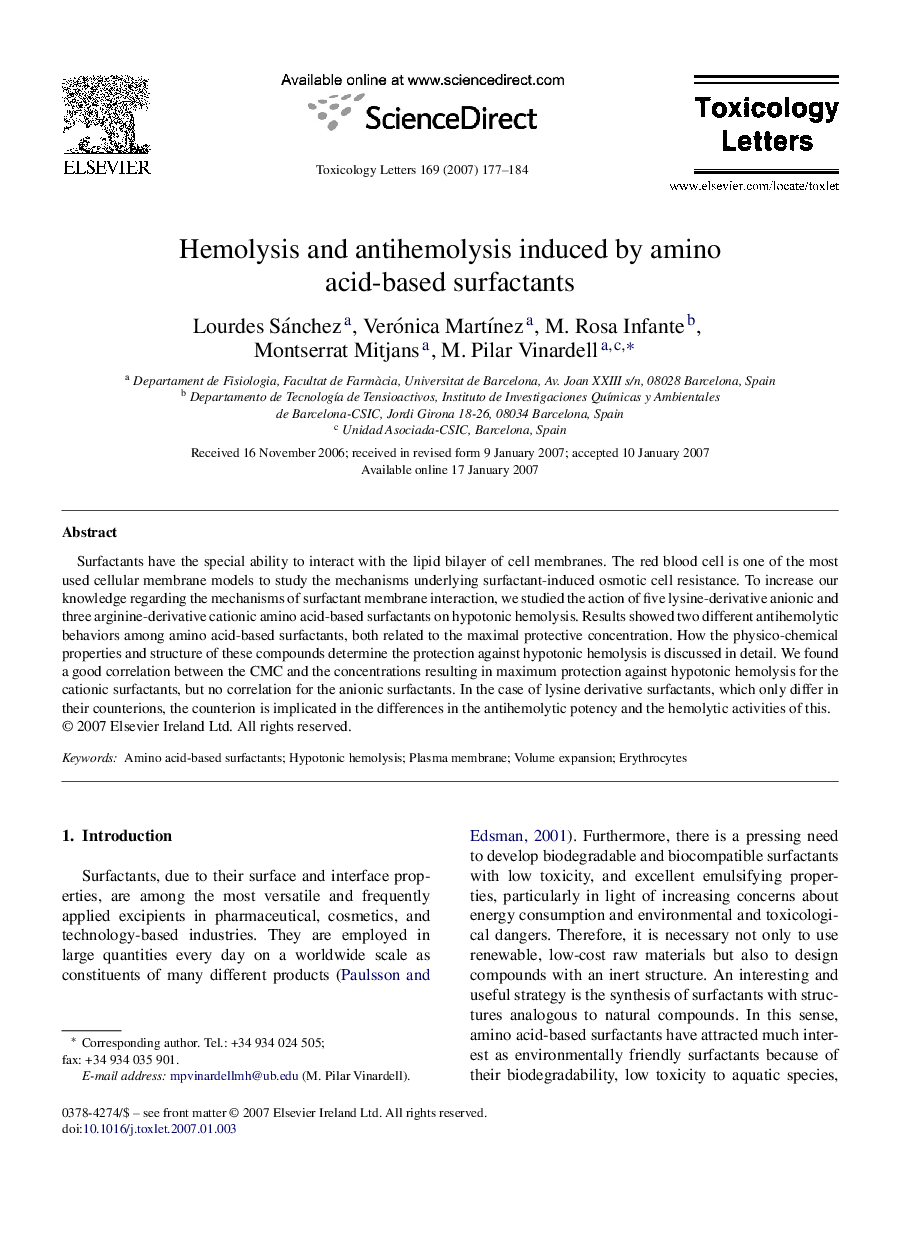| Article ID | Journal | Published Year | Pages | File Type |
|---|---|---|---|---|
| 2601575 | Toxicology Letters | 2007 | 8 Pages |
Abstract
Surfactants have the special ability to interact with the lipid bilayer of cell membranes. The red blood cell is one of the most used cellular membrane models to study the mechanisms underlying surfactant-induced osmotic cell resistance. To increase our knowledge regarding the mechanisms of surfactant membrane interaction, we studied the action of five lysine-derivative anionic and three arginine-derivative cationic amino acid-based surfactants on hypotonic hemolysis. Results showed two different antihemolytic behaviors among amino acid-based surfactants, both related to the maximal protective concentration. How the physico-chemical properties and structure of these compounds determine the protection against hypotonic hemolysis is discussed in detail. We found a good correlation between the CMC and the concentrations resulting in maximum protection against hypotonic hemolysis for the cationic surfactants, but no correlation for the anionic surfactants. In the case of lysine derivative surfactants, which only differ in their counterions, the counterion is implicated in the differences in the antihemolytic potency and the hemolytic activities of this.
Related Topics
Life Sciences
Environmental Science
Health, Toxicology and Mutagenesis
Authors
Lourdes Sánchez, Verónica MartÃnez, M. Rosa Infante, Montserrat Mitjans, M. Pilar Vinardell,
